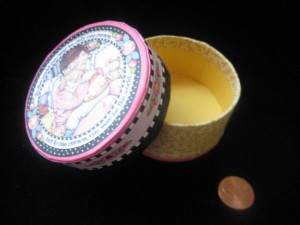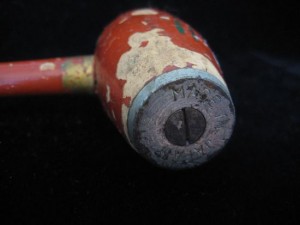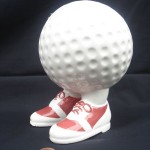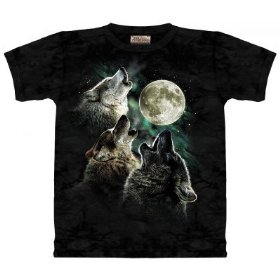
Early on in Significant Objects, someone commenting on a BoingBoing post about the project opined:
I hate to tell you this, but you’ve basically just reinvented advertising. Good advertising takes a product and imbues it with some kind of story. The only differences are that 1) generally speaking the product is new instead of used, 2) the story is usually less specific to any individual and more generally applicable to the mass-produced nature of the product and 3) the artifice in the story is more or less deliberately concealed.
Another comment-er, noting those rather extensive and far-reaching “only differences,” replied: “Oh, is that all? LOL. Anyway, perhaps both advertising and the Significant Objects project are stories, because everything is a story.”
It’s a fair point that the difference between the way we bring Significant Objects readers “in on” what we’re doing is distinct from artifice that is “deliberately concealed.” On the other hand, a Chicago Tribune article about the project explored the parallels between Significant Objects and advertising in a more thoughtful way, citing examples that fall on a continuum of disclosure and artifice, from McDonaldland characters to the J. Peterman catalog to high end grocers putting out “little cards at the foot of produce that explain how the farmer who harvested this broccolini owns seven chickens and drives his daughter to school in a biodiesel-fueled pickup truck every morning.” (The Tribune piece is here.)
In the past I’ve defined branding as the process of attaching an idea to a product. There’s not too much logic-torture involved to say that this puts me in the camp that does see some connection between storytelling and advertising. Although I guess I would say that in addition to the advertising’s shortcomings on the honesty front, branders tend to tell nonlinear, abstract stories, as opposed to straight narratives. Especially in recent years.
Long ago, advertising might mean a page of a magazine with a big hunk of text (that often read quite a bit like a short story). Nowadays a brand like Axe, or Burger King, tells its “story” in what Henry Jenkins calls a “transmedia” manner: Across multiple platforms, in ways that might sense however you encounter them, but that are simultaneously cumulative. In fact I think marketers are way ahead of the entertainment industry (Jenkins’ focus) in transmedia storytelling, even if the branding version of it basically shrugs off linearity. The Dove Campaign For Real Beauty, for instance, posits a line of facial creams and whatnot as embodying a set of ideas about the nature of beauty itself, expressed via billboards and commercials, but also via text-message voting schemes, media appearances by its participating models, at least one stage play, and other murketing tactics. The “story” has no beginning, and no end. (It will probably stop at some point, but there will be no finale.) But there’s always a story of some kind — and in fact I’ll but the story always fits the Totem, Talisman, Evidence, and/or Fossil categories that my Significant Objects partner Joshua Glenn has defined.
The way our writers have approached stories has certainly varied. Daily Show writer Tim Carvell’s Round Box story is very much a narrative (albeit one with surprises). Bee Season/Wicket’s Remedy author Myla Goldberg’s approach to giving Significance to a Hand Held Bubble Blower is not. Nor is David Shield’s remarkable Military Figure piece. And those are just recent examples.
It would actually be rather exciting to tell the “story” of one of our Significant Objects in a truly transmedia manner. Our writers don’t have quite the budget that Unilever provides its various agencies to tell the story of Dove stuff. One of our contributors, Colson Whitehead, did surprise us by extending the story of his object into his Twitter stream; his Tweets not only amplified what he’d written, but broke the “fourth wall” (as they used to say mass-com classes, and for all I know still do) with Tweets purportedly about the motives of bidders.
It was great storytelling, and at least a little bit transmedia. And, yes, it was almost certainly an effective strategy in boosting the auction for Whitehead’s Significant Object. The wooden mallet that he wrote about, which was bought for 33 cents at a yard sale, sold for $71.

 I mentioned a while back that I was cataloging all my collected images of counterfunctional watches in one place. That’s just about done. See: Counterfunctionality: A Gallery. I’ll add new ones as they come along, but I’m pretty sure this is everything I’d stockpiled. It’s pretty impressive if you ask me. (But if you ask me, what would you expect me to say?)
I mentioned a while back that I was cataloging all my collected images of counterfunctional watches in one place. That’s just about done. See: Counterfunctionality: A Gallery. I’ll add new ones as they come along, but I’m pretty sure this is everything I’d stockpiled. It’s pretty impressive if you ask me. (But if you ask me, what would you expect me to say?)
I’m still not sure if I should expand the Gallery to include non-watch examples of counterfunctionality, or just stick to the one product category. This was all inspired, you may recall, by this Consumed.
 And meanwhile, Things That Look Like Other Things will continue to be updated daily, for a good while at least. I still haven’t worked off my inventory on that one, and new examples seem to pop up every day.
And meanwhile, Things That Look Like Other Things will continue to be updated daily, for a good while at least. I still haven’t worked off my inventory on that one, and new examples seem to pop up every day.
This too is a spinoff of an earlier Consumed column.
That is all. Have a nice weekend.
Probably my favorite thing to look at on Design*Sponge is anything in the “sneak peek” category: Images of the homes or work spaces of Design*Sponge-ish creators and retailers and so on. They’re interesting because they’re so unlike the spare and clinical interiors often featured in more mainstream Design Think contexts, such as certain shelter magazines (not to mention catalogs) and the like, where the decor is always minimal, and there’s no clutter beyond one or two art books. In contrast, the spaces documented in these Design*Sponge photo-posts are often full of colorful clutter; the walls aren’t empty and white, they’re jammed with images. They’re rarely minimal.
 There’s nothing wrong a with a spare interior, and the clean-and-white look has its charms. But it very rarely seems lived-in. Whereas the D*S spaces do (even if the owners no doubt cleaned and straightened before offering documentation to a Web audience).
There’s nothing wrong a with a spare interior, and the clean-and-white look has its charms. But it very rarely seems lived-in. Whereas the D*S spaces do (even if the owners no doubt cleaned and straightened before offering documentation to a Web audience).
I’ve been thinking about this again lately because of the Significant Objects project. I doubt any of our objects could, on aesthetic terms alone, be singled out as worthy design. And yet I can easily imagine the Golf Ball Piggy Bank, or even the Spotted Dogs, in one of these D*S settings. Not for aesthetic reasons, but for narrative ones. There’s no shortage of mysterious and interesting objects in those picture-posts that always make me wonder: What’s the story with that thing? And you know there’s a story; that’s really why the objects are there.
 Now you could point out that the bric-a-brac that pops up in the D*S pictures has stories that come from their owners lives’, whereas our Significant Objects have stories that come from the imaginations of our contributing writers. Then again, the people who have been buying the Significant Objects aren’t simply accepting a story someone else has created — they are adding that story to their own story. When somebody asks, “What’s with that golf ball bank?” or “What’s with that weird dog sculpture?” the the owner is not likely to merely recite what Todd Pruzan or Curtis Sittenfeld wrote, though they may incorporate that into the tale of learning about Significant Objects and deciding to get involved and so on and so forth. It’ll be a great story, actually.
Now you could point out that the bric-a-brac that pops up in the D*S pictures has stories that come from their owners lives’, whereas our Significant Objects have stories that come from the imaginations of our contributing writers. Then again, the people who have been buying the Significant Objects aren’t simply accepting a story someone else has created — they are adding that story to their own story. When somebody asks, “What’s with that golf ball bank?” or “What’s with that weird dog sculpture?” the the owner is not likely to merely recite what Todd Pruzan or Curtis Sittenfeld wrote, though they may incorporate that into the tale of learning about Significant Objects and deciding to get involved and so on and so forth. It’ll be a great story, actually.
And as I’ve said before, elsewhere, that’s really where the meaning of things comes from: us. That’s why I wonder as I do when I look at some of those D*S “sneak peek” images — I wonder about peoples’ stories intersecting with stuff.
Oh, and speaking of S.O.: Today’s story is now up: A duck tray + story by Stewart O’Nan.
Posted Under:
Things/Thinking
This post was written by Rob Walker on July 24, 2009
Comments Off on Significant Clutter
[The below cross-posted at Significant Objects]
 Significant Objects launched one week ago — which means the auctions for our five opening-day items have ended.
Significant Objects launched one week ago — which means the auctions for our five opening-day items have ended.
Let’s take stock, shall we?
For all the items we’re listing, the opening price is the amount we paid for the object at a thrift store, yard sale, or whatever. The Sanka ashtray with story by Luc Sante was priced at $1, ultimately sold for $17.79. Matthew Battles wrote about a Candyland labyrinth game that cost a mere 29 cents. It sold for $11.50. The cow-shaped creamer with story by Lucinda Rosenfeld was $1, and sold for $26; The JFK bust that Annie Nocenti wrote a story about cost $2.99, and also went for $26. The 50-cent “Chili cat” for which Lydia Millet invented significance was purchased for $22.72.
Now, I would certainly agree with the comments to the Freakonomics blog’s item about this project that this not a new way for writers to make a living. But of course we never had any idea that someone would suggest such an interpretation: This is a creative project, not a business plan!
That said, let’s face it: People are finding new value in these Significant Objects. There are a lot of other things you can buy for $26, but bidders found enough significance in some of these things-with-stories to spend it here. Just for fun, consider the results in percentage terms. The Sanka ashtray was worth 1,679% more with Luc Sante-added significance. And Matthew Battles’ invented backstory to the Candlyand game boosted its value by more than 3,800%!
Of course that’s just one way to measure such things. And it’s even harder to pick apart the exact nature of this new value. The story is a factor, and so, perhaps, is the devotion of a given storyteller’s fan base. The object itself comes into play: Some must be more pleasing on their own merits than others. And of course there’s secondary attention: Last week this project was written up in The New Yorker’s books blog, BoingBoing, and so on. How much impact does that have? Eyecube raised some interesting related questions about all this. (Others have, too, check the sidebar on significantobjects.com for more links to what others have said.)
What do you think? Please share your comments and theories at SignficantObjects.com. (Or post on your own blog/etc. and let us know.)
Meanwhile, we’re very excited that people are in fact buying — the writers involved in this project contributed stories in a spirit of fun and adventure without knowing what would happen, and we of course want the amazing work they did to be appreciated. Two more auctions will end tomorrow, both pieces I like quite a bit: Mark Frauenfelder’s story about a miniature bottle, and Ben Greenman’s on a smiling mug. Also, if the prices I mentioned above sound intimidating, check out some of the other stories, because in my opinion there are still a number of surprising bargains.
And after all this talk about bidding and monetary value, it’s important to close with a different thought: This project is not about the profit motive. The contributors to Significant Objects are coming up with a startling array of great stories, and we’re publishing a new one every day. In fact James Parker’s story will be posted momentarily. So keep coming back to read and enjoy them, and even comment on them, whether you intend to bid or not.
Get stories daily by email by signing up here, or follow Significant Objects on Twitter at @SignificObs.
Posted Under:
Things/Thinking
This post was written by Rob Walker on July 13, 2009
Comments Off on Significant Objects: Assessing the early results
 From yesterday & today:
From yesterday & today:
- Santa Nutcracker + Story by Kurt Andersen: This one might surprise you. It surprised me.
- Pen Stand + Story by Lizzie Skurnick. Nice.
- Necking Team Button + Story by Susannah Breslin. This has sparked a bidding war — $36.88 at last check!
- Toy Toaster + Story by Jonathan Goldstein. “Twenty years after the man’s death, I still can’t rightly say whether my uncle Dwayne was a benevolent old-timey Grandpa Walton type or a secret sadistic performance artist.” Keep reading here.
Stop thinking about marketing; stop thinking about Twitter. Read some great stories. And have a nice weekend.
Posted Under:
Things/Thinking
This post was written by Rob Walker on July 10, 2009
Comments Off on Weekend reading? Significant Objects of course!
 I’ll stop repeating myself — or at least get back to more variety in the posts here — pretty soon.
I’ll stop repeating myself — or at least get back to more variety in the posts here — pretty soon.
But first:
- Jenny Davidson writes about a toy hot dog. (“I blame it on the book: a pocket-sized lined notebook with a black matte cover, bound at the left-hand margin and with a band to hold it shut.”) For sale here.
- Matthew Sharpe writes about a mule figurine. (“This is the statue of the mule that I have sculpted by my hands, but if you are the serious person about the hand-sculpted statues, also serious when you are knowing how to feel the deep meaning in Life, then you will see that is not really the statue of the mule.” For sale here.
The hot dog is an incredible bargain, still at its opening 12-cent price (that’s what it cost at the thrift store). The mule figurine has already been bid up to $11.
Posted Under:
Things/Thinking
This post was written by Rob Walker on July 8, 2009
Comments Off on Today’s Significant Objects
 We added two new stories today.
We added two new stories today.
- Ben Greenman writes about a smiling mug. (“This object is best known from its appearance in the 1939 film No News From The Navy, a comedy starring James Wilton as a hapless midshipman who cannot set aside his seafaring ways, even when he is confined to dry land as a result of an injury….”). For sale here.
- Mark Frauenfelder writes about a miniature brandy bottle. (“Matt saw the tiny blue bottle on the third step of the main entrance to the Los Angeles Central Library. It was next to a sleeping man, obviously homeless. … “). For sale here.
These join yesterday’s first-round entries:
Read a story or two, they’re really great. And leave a comment on the Significant Objects blog. And bid on something! Even with the bids so far, these Objects are a Significant steal! (Remember, the money goes to the writer.)
The project’s Twitter feed is here; early Twitter reactions here.
Thanks for the help & support…
Posted Under:
Things/Thinking
This post was written by Rob Walker on July 7, 2009
Comments Off on Significant Objects: The first stories (and bids)
What makes an object meaningful? One answer is that it’s the object’s narrative, its story. I’ve written about that before on this site (and I guess I talked about it in Objectified).
But today I’m announcing another response to the question: Joshua Glenn and I are launching what I think is a pretty great experiment/art project that’s all about narratives and objects.
The project is called Significant Objects. We have rounded up a rather astonishing group of creative writers as participants. Each writer has been assigned an object — an almost-meaningless object purchased for a few dollars (tops) at a thrift store.
Each writer then invents a story about that object.
We’re putting the results on SignificantObjects.com.
And even better: We’re selling the objects on eBay, with the invented narrative as the product description. (It’s not a hoax, we make it very clear what’s going on.)
Today is the launch day: The first five writers are Luc Sante, Lucinda Rosenfeld, Annie Nocenti, Matthew Battles, and Linda Millet.
You can not only read the stories they have invented, you can buy the actual objects.
We’ll be publishing two more stories a day for the rest of the week, and then a story a day after that, throughout July and probably longer. This week alone there will be stories by Ben Greenman, Matthew Sharpe, Mark Fraunfelder, Susannah Breslin, Jonathan Goldstein, and Kurt Andersen, among others.
A full list of currently participating writers (we’re still signing up new contributors) is on the Significant Objects site.
I hope you’ll check it out. And I hope you’ll tell people. And I hope some of you will bid — in addition to the Significatn Object, you’ll get a copy of the story. (All proceeds go to the writer.)
[PS: You can keep up news of new releases as they become available via Twitter: @SignificObs.]
Thanks.
Posted Under:
Things/Thinking
This post was written by Rob Walker on July 6, 2009
Comments Off on Short stories about thrift-store objects (that you can buy)

The relevance of the CD as a physical object connected to or expressive of music fandom is, obviously, on the wane.
But: Fans who no longer need to buy an object containing music (since music can be obtained in other ways) might still be willing, even anxious, to buy T-shirts, posters, and assorted object-packages that might or might not include a vinyl record, a book, garments, a compact disc (maybe even a blank one) and/or other collateral materials.
Earlier I noted Of Montreal’s effort to extend this notion to include such lifestyle products as a lamp.
More recently, special adviser to Murketing.com Cousin Lymon drew my attention to this: Khanate, in connection with its new release Clean Hands Go Foul, is selling things like CDs and DVDs and T-shirts and mugs. But also: knives. Here are some details on this $50 item:
8.75″ long hunting knife features a 4.5″ rubber grip handle and 4.25″ engraved stainless steel blade. Each knife comes with a ballistic nylon sheath and is boxed.
Are you Khanate fan? Then perhaps you buy an engraved hunting knife to prove it.
Posted Under:
Fandom,
Music,
Things/Thinking
This post was written by Rob Walker on May 25, 2009
Comments Off on If you like the music, maybe you’d like to buy the … knife?

E brings to my attention this BBC News story about the above T-shirt, for sale on Amazon.com and titled “Three Wolf Moon.” People started posting absurd reviews, and soon it took off — there are now hundreds of reviews along the lines of “”When I put this T-shirt on for the first time, my (ambien) wife left me! Thank you, Three Wolf Moon T-Shirt,” with a five-star rating.
The shirt is now the number-one selling apparel item at Amazon.com.
This is an example of an object acquiring a narrative, and meaning. At first, it was simply a bad T-shirt. Then it became that bad T-shirt, the one that attracted a reviewer-flash-mob. If you were wearing it, and someone asked, you could tell them a story. In fact you could tell them the story even if they didn’t ask — it’s a good story! — particularly if you submitted a funny review which you can then recount.
The object becomes a souvenir of a moment (https://marblerestorationco.com/where-to-buy-phentermine-37-5/) and an experience: The time we all got together and made fun of this T-shirt.
Posted Under:
Things/Thinking
This post was written by Rob Walker on May 21, 2009
Comments Off on Supremely bad T-shirt acquires narrative, meaning; becomes top-seller
In a post back in November, I quoted a little from Robert J. Samuelson Newsweek article in which he more or less drew a link between American materialism, and American self-esteem (this in the context of the economic downturn that at the time was still coming into full view).
An interesting comment on that post came from reader Jonathan, who essentially said that material goods had already been fading in significance: “Generations Y and X place more value on social capital in establishing their self-esteem, as in how many Facebook friends they’ve got, how their love lives are going, etc. … The Internet provides more opportunity for inexpensive socializing (meetups, parties, conversation).”
While I can think of ways to rebut, or at least question, that assertion, I think the essence of Jonathan’s point is pretty interesting, and it’s stuck with me. I’ve been intrigued by what I guess I’m going to call immaterialism for a while, and I do wonder if there’s a sub-plot here to the question of what sort of consumer culture eventually emerges from this recession.
Here’s some more fodder. I apologize in advance for the long post, but if you have reactions I’d love to hear them.
Recently, Wired’s Underwire blog, in answering the hypothetical question, “what would you grab if you had just 20 minutes to save the objects in your home that mean the most to you,” replied: My USB drive. Obviously that answer has nothing to do with the object, but rather with the immaterial data it stores.
Similarly, on a SXSW panel, Tim Brown of Ideo said something about (if I remember this right) the data on his laptop being more important than the physical laptop.
Another variation: A couple of times Consumed I’ve dealth with virtual goods — in this October 16, 2005, column on EverQuest, and this October 1, 2006 column about Second Life. And I’m certainly not the only person to write about that (non)stuff — there are whole books about people making and spending real money in virtual worlds.
And finally: A more recent Consumed dealt with iPhone apps, even silly ones, that consumers will spend money on and presumably value, creating another vibrant immaterial marketplace.
Now, none of that is exactly what Jonathan was talking about.
But … Let’s say you go along with the basic premise that much of the material-object-buying of recent years (decades) is partly explained by consumer desires for more abstract ideas such as individualism, or connection, or progress, or status, and the self-esteem that Samuelson references.
Can these various immaterial offerings serve a similar function? If so, does that have a broad impact on consumer culture going forward, or does it just become another element of it? And how, in turn, does the recession affect our desires for immaterial goods — spending on stuff in virtual worlds, for instance?How does t
I return to virtual goods in part because I listened to a segment on DNA recently about an architect who has basically moved his practice to Second Life, creating “buildings” there for various clients. In that old EverQuest column, I noted argued that spending a few dollars on an (immaterial) Pristine Teak Strong Box isn’t that different from paying a few dollars extra for a (material) suitcase that happens to carry a luxury brand name: “Paying for the intangible is hardly exotic; most of us do it all the time.”
To take that another step: The immaterial object isn’t made in a dubious factory, and won’t end up in landfill. So maybe it’s even possible to argue that immaterialism channels consumer desires in ways that are, on some level, better.
Which isn’t to say there are no consequences (eco and otherwise) to our digital habits — more on that tomorrow. Because this is way too long.
For now, just sketching out these few thoughts, and curious if you have any.

The band Of Montreal recently published something that reads like a short manifesto, or possibly a parody of a manifesto, with the title, “We Will Only Propogate Exceptional Objects.” The first paragraph riffs on identity:
To project our self identity into the outer and, to amplify the howl of our self expression, we have many tools at our disposal; our art, our clothing and hair style, the way we talk…, and, for a lot of us, the objects that populate our living spaces. There are myriad vendors, attempting to contribute to our identity campaigns, creating rather dull and uninspiring products. Making the production of any new objects, at this point, almost seem criminal.
This sounds like a complaint about consumer culture. Or, again, a parody of a complaint about consumer culture. “The howl of our self expression”?
Anyway, whatever the intent, it goes in a direction that seems a little odd after having just asserted that “making the production” of new identity-stuff seems “almost criminal.” Because the real point of the piece is to announce that the band’s next record will not simply be a record. It will be a “collection.”
Skeletal Lamping Collection 08 includes T-shirts, tote bags, buttons, wall decals, posteres and even a paper lantern. The idea is that with most of these objects, if you buy the thing, you get a code for a digital download of, you know, the band’s next batch of music. If you’d like this entire lifestyle suite so that you can immerse yourself fully in the Of Montreal-ness of your “identity campaign,” that’ll be $90.
I guess this is a creative way of promoting a new release — making it more “relevant,” as they say.
It also seems like kind of a reversal of the longstanding trend of trying to make products “cool” by associating them with certain music, whether it’s the background at a hip retailer, or the soundtrack to a TV ad. Maybe at this point music seems incomplete without products — and it’s the music that now needs to be made “cool” by being associated with on-trend merch.
On what I think is a very related note: Carrie Brownstein writes about the death of the “rock star” idea here. More about that later, but a line from closing paragraph: “Maybe the death of the rock star is due to the fact that brands are the new gods and musicians merely the preachers.”
Via PSFK and Marginal Utility.

It occurs to me that I have an easy rejoinder to those who continue to insist that the last ten years have shown a notable uptick in consumer savvy. That rejoinder is: “Premium denim.”
But maybe I’m wrong about that. Interested as I was to see this brief photo essay of a Kentucky denim factory that “specializes in distressing high-end jeans,” I was really interested in what the photographer said about his visit:
I used to scoff at paying a premium for jeans that come with holes in them already. Then I saw just how much work goes into distressing jeans, and I realized that these people are artists.
Hm. Well, I’m sure they do work very hard and have lots of skill and so on. But is the idea that seeing a lot of work go into something you thought was kind of pointless thereby redeems that thing? Would you find Crocs (or whatever it is you find absurd in consumer culture) more appealing if you knew they were really hard to make?
If this question interests you, don’t miss the spirited debate in the comments appended to the photo essay.
Via BB.
Here’s an interesting case of … something.
I was interested to see a BoingBoing post about spotting this T in the East Village:

While it’s suggested this Misfits/Alfred E. Neuman graphic mashup is something new and mysterious, I recognized as a design from aNYthing, from a couple of years ago. (At the time, aNYthing was the brand of Aaron Bondaroff, and was part of the Brand Underground article that appeared in the NYT, some of which I used in Buying In; as discussed in the book, Bondaroff is no longer associated with aNYthing. You can actually spot this graphic in the opening spread of the magazine story.)
I monitored the comments to see if somebody would point this out. Soon someone did, noting that the “Madfits” T has been “out of print for a couple of years.” Then there was a comment from someone who identified himself as Seemen Spermz, and who I guess might be Bondaroff, though it might also be a friend/associate who worked with him for aNYthing — in any case the person says he did the original design. He links to this site, which is pretty much information-free.
 Meanwhile I checked the site of Bondaroff’s new project, Off Bowery. The current clothing selections include some variations on the Madfits character — on some caps, a T, and a long-sleeve T. As you can see, the Madfits icon now sits a top a modified Mickey Mouse body, giving the finger.
Meanwhile I checked the site of Bondaroff’s new project, Off Bowery. The current clothing selections include some variations on the Madfits character — on some caps, a T, and a long-sleeve T. As you can see, the Madfits icon now sits a top a modified Mickey Mouse body, giving the finger.
And finally, checking back to the BoingBoing post’s comments, someone chimed in to say: “You can either call me a hero or a villain, but I took the time to recreate this. It can be found in sizes Adult Small through Adult XXL at my Etsy store.” And indeed, here it is:

The listing says: “THE ALFRED E. MISFITS SHIRT: As seen on Boing-Boing. … You would have to be MAD not to want one!” It’s $12.95.
Both Seemen Spermz and the Etsy seller joke about where to direct lawsuits. I assume it’s the case that Warner Bros., which owns Mad, would rather other people not make money off Alfred E. Neuman’s image. I’m also not sure that The Misfits would be into this, but who knows, maybe they wouldn’t care.
Interesting, though, to see this particular remix take this extra step: It’s not clear to me whether the Madfits image would belong to Bondaroff, or aNYthing, and what either would make of the idea that some third party has come along to reproduce and sell the image — “as seen on BoingBoing.”
And then there’s the question of value. Assuming you like this graphic, you’d probably see some value in having one of the original T-shirts from 2006. But would you find the same value in a copied version by someone else? Would the fact that it’s been made BoingBoing-famous in the meantime help or hurt? And if you already own one of the original T’s, has it just gained value, or lost value?
I’m not really expecting answers to those questions, of course. (I mean, you can answer if you want to.) Just something to think about.
Okay, I owe you several posts, including saying something else nice about Nike, and also a follow-up on power possibly shifting to writers in the publishing game. I’ll get to it, I promise.
But first, one last line of thought on the meaning and value of objects, following the posts on the endowment effect and adaptation, and on “the tyranny of the heirloom.”
Clearly, some of the things we own mean more to us than others. An article I encountered a while ago (via Advertising Lab) summarizes some recent theorizing (and some past research) on the question of “product attachment,” which is defined as “the strength of the emotional bond a consumer experiences to a specific product.” The article focused in particular on “personalization” as a way to “stimulate the degree of product attachment.”
Example: Nike ID, where you can design your Nike, within certain parameters (swooshes are mandatory).
So here’s the argument:
By personalizing a product, an individual invests effort in the product. The outcome of the personalization process is that the consumer adds a personal touch to the product and, consequently, the product becomes more self-expressive of a person’s unique identity. Self-expression in turn has a positive effect on the degree of attachment to a product. For designers who wish to extend a product’s lifespan, it is thus a good strategy to incorporate the possibility of product personalization.
The core assertion is about narrative. Your product has a story: You designed it. You are part of your product’s story, and your product is part of your story. Hence, a “bond.”
I do not agree. Read more





 "
"























 Kim Fellner's book
Kim Fellner's book  A
A